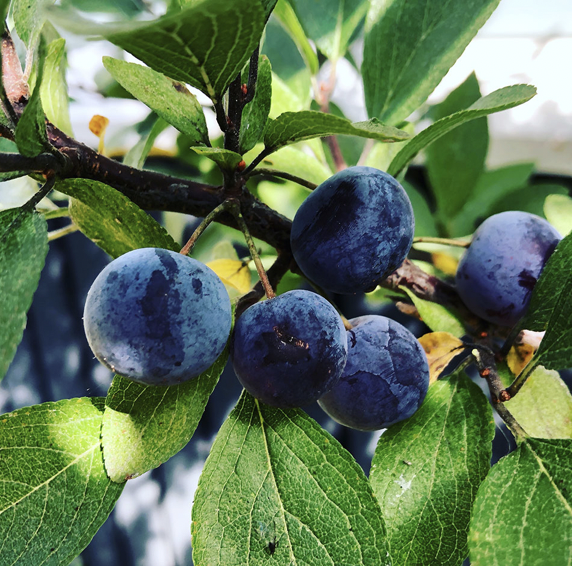Beach Rose (1-2' seedling)
Latin Name: Rosa rugosa. Family: Rosaceae (Rose)
USDA hardiness zone: 3
Growth habit: Shrub
Mature size: 6ftx6ft
Native range: East Asia
Preferred habitat: Forest edges, sandy sites, disturbed soil, hedges, full sun
Pollinators: Bees
Edible parts: Fruit,Flowers
Uses and functions: Petals and fruits used for heart (physical and emotional) medicine in herbalism, Living fence, erosion control on sandy slopes
Though thorny, this bush is a pleasure to grow. Its showy pink and sometimes white flowers are a treat in spring, and can be used as a heart gladdener and tonic in herbalism. By the end of the season, they ripen into sweet and sour rose hips, famously high in vitamin C and E. Spreads by runners into a clumping colony, and is very tolerant of sandy and salty soils.
Latin Name: Rosa rugosa. Family: Rosaceae (Rose)
USDA hardiness zone: 3
Growth habit: Shrub
Mature size: 6ftx6ft
Native range: East Asia
Preferred habitat: Forest edges, sandy sites, disturbed soil, hedges, full sun
Pollinators: Bees
Edible parts: Fruit,Flowers
Uses and functions: Petals and fruits used for heart (physical and emotional) medicine in herbalism, Living fence, erosion control on sandy slopes
Though thorny, this bush is a pleasure to grow. Its showy pink and sometimes white flowers are a treat in spring, and can be used as a heart gladdener and tonic in herbalism. By the end of the season, they ripen into sweet and sour rose hips, famously high in vitamin C and E. Spreads by runners into a clumping colony, and is very tolerant of sandy and salty soils.
Latin Name: Rosa rugosa. Family: Rosaceae (Rose)
USDA hardiness zone: 3
Growth habit: Shrub
Mature size: 6ftx6ft
Native range: East Asia
Preferred habitat: Forest edges, sandy sites, disturbed soil, hedges, full sun
Pollinators: Bees
Edible parts: Fruit,Flowers
Uses and functions: Petals and fruits used for heart (physical and emotional) medicine in herbalism, Living fence, erosion control on sandy slopes
Though thorny, this bush is a pleasure to grow. Its showy pink and sometimes white flowers are a treat in spring, and can be used as a heart gladdener and tonic in herbalism. By the end of the season, they ripen into sweet and sour rose hips, famously high in vitamin C and E. Spreads by runners into a clumping colony, and is very tolerant of sandy and salty soils.









